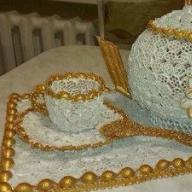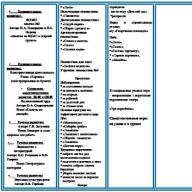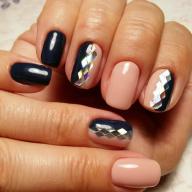All lovers of this beautiful metal at one point notice that it has lost its former shine and is no longer so pleasing to the eye. This is due to the plaque that appears on it, which accumulates over time and becomes increasingly difficult to clean.
Two coins: one before cleaning, the other after
If you want to always see your coins in perfect order, do not delay, clean them as soon as cloudiness appears.
Popular methods
Cleaning silver coins in special salons
Nowadays, the saying “every whim for your money” is very common. And indeed, no matter what types of services we are offered, this is also true for silver cleaning. On the Internet you can find many websites of cleaning companies dealing with this issue. Surely you can find something for yourself.
However, why spend money on specialists if you can do the cleaning yourself, especially. If it does not involve any complex actions and the use of special knowledge.
Don’t forget - the sooner you start cleaning, the sooner you’ll finish it and the less energy you’ll lose. Write this down as a motto for yourself. Silver loves to be handled with care.
So, let's look at the most effective ways cleansing silver coins at home.

How to clean old coins?
As a rule, silver coins do not contain stones, although there are commemorative coins that were originally made for beauty; they require a slightly different approach. Let's look at everything in order.
- First you need to remove any unwanted dirt and grease from the surface of the product. Regular soap can help with this, but preferably liquid or dishwashing soap. Although it is more aggressive, it does not leave a soapy residue.
Dilute a weak soap solution and hold the coins in it for about five minutes, then rub (never against each other), rinse under regular warm water and blot with a towel or napkin. This procedure will speed up subsequent cleaning and make it more effective.
If there is dirt left in hard to reach places, you can try using a needle, toothpick or brush, whichever is more convenient for you, get rid of the dirt and rinse the coin under water again.

Prepare a soap solution
As soon as there is no dirt or grease left on the coin, you can move on to the next step.
- The following are several methods:
- tooth powder. Take a coin and dip it in this powder. Then we will need rags (fleecy ones will be more convenient), rub the coin until it shines;
- toothpaste. The steps here are exactly the same as in the first recipe, but this method eliminates minor scratches on the metal. In essence, this is a more gentle version of the first method;
- tooth powder with ammonia. Ammonia, or as it is also called, ammonia solution (ammonia itself will not work, the liquid is too concentrated), you can buy at the pharmacy. It must be mixed with tooth powder and brought to a homogeneous paste (it does not need to be very thick or very liquid, medium consistency is best). Once the paste is ready, apply it to the coin (you can use a cotton pad to avoid damaging your hands) and let it dry. After drying, wipe the product with a cloth or rinse;
- ammonia and water. Dilute water with ammonia in a ratio of 10:1, mix and place the coins in this solution. Then the process will go on its own, but your constant control is needed. takes from ten minutes to an hour, but the main thing here is not to overdo it, it’s better to repeat the procedure later than the metal will begin to corrode. If you want to carry out such cleaning when the coin has just begun to darken, it will be enough to simply wipe it with a cloth soaked in a solution. If the contamination is very strong, you can take a chance and try putting the coin in pure ammonia. The reaction will go faster, don’t miss the moment when it’s time to get it. After cleaning, rinse the coin and dry it;
- soda. Add water to the soda until you get a homogeneous porridge. Afterwards, take a little bit and rub the product. Be careful not to damage the surface. If you are uncomfortable performing this procedure with your hands, then take a bandage or a piece of cotton wool. You need to rub the coin until the cloudiness disappears and shine appears. If there is plaque left in some hard-to-reach parts, use a brush. After cleaning, rinse the coin under water and wipe dry;
- salt, soda and detergent. First we prepare the solution, we will need a liter of water, a tablespoon of salt, soda and detergent for dishes (not just one tablespoon, but each substance). Mix everything until smooth. Place the coins in a heat-resistant bowl, fill with the solution and place on low heat for about half an hour. Don't forget to constantly monitor the process. Then, as always, rinse and dry;
- special liquids and wipes. Some companies dealing jewelry They may also sell care products. There are special liquids for cleaning silver. Instructions for them can be found on the packaging or asked from the seller.
How to clean a silver coin with stones
Now see how to clean coins with stones. Such methods can be suitable not only for semi-precious stones, but also for precious stones:
- The first stages are absolutely identical, but you shouldn’t forget about them!
And here are a couple of recipes:
- Ammonia and water. This method is suitable for coins if there are no pearls. For the solution you need a glass of water and six drops ammonia, mix this and place a cloth there, with which we then wipe the coins until they are completely clean. After the procedure, we rinse and wipe the silver.
- Egg water. First, boil the eggs, after boiling, take them out (you can keep them longer if you don’t like soft-boiled) and let the water cool. As soon as it becomes not hot. We put coins there. We wait for a while. You might be surprised, but this method really works. Don't forget to dry the items.
How to keep silver clean for a long time
After you have rid the coins of the black coating, it is too early to rejoice.
That's seven very simple rules, which are often overlooked, but will keep your silver clean and shiny for months or even years after cleaning:
- Store each coin in a separate case; do not dump them all in one big pile, as they will get scratched and the cleaning process will become more difficult.
- Don't forget, metals don't like high humidity. Silver may lose its luster and become cloudy ahead of time. You can put silicate gel on it (you can find it in shoe boxes).
- Do not store silver coins in direct sunlight, as they will stop shining.
- Avoid sudden temperature changes.
- Wipe the silver with a special cloth or piece of velvet. This will prevent the development of turbidity.
- Silver loves attention, it sounds absurd, but don’t let it gather dust on the shelf for a long time.
- Do not leave coins where they may be exposed to unwanted reactions with chlorine, mercury or sulfur
Cleaning silver coins at home is a responsible task, since in many cases silver coins are already much more expensive than copper coins (on which they usually practice cleaning methods). If the coin is very expensive, do not skimp and give it to a restorer, or sell it uncleaned.
Well, if you still decide to clean a silver coin, this article will at least help you not spoil your “haul.”
First of all, we determine the degree of contamination of the surface of the coin and approximately evaluate the quality of the silver. Typically, large silver coins (ruble, half, half-fifty) were minted from high-grade silver, for example 728 standard ().
Smaller coins were made from low-grade silver, so you can most often see blackening and a green coating (admixtures of another metal) on them.
But judging in general, silver coins are rarely found in poor condition; more often they are in excellent “preservation” - a noble metal.
Cleaning silver coins with ammonia
Ammonia can easily remove the “green coating” and bring your coin into excellent shape. What should be done? We dip our coin in alcohol for 1-2 minutes, take it out, wipe it with cotton wool, and see if our plaque disappears. If there is no effect, we perform this procedure several times.
The green coating is created by copper oxides, and this, of course, greatly spoils the appearance of the coin. How else can I remove it? There is an excellent drug that anyone can purchase at any pharmacy, this is Trilon V. The quality and cleaning procedure are similar to “ammonia”.
To clean coins with citric acid, you need to dilute it in boiled water(as shown in the video after the article), and put our coin in a saucepan with our solution, without stopping boiling, watch for changes, do everything carefully. This method is very good for cleaning Soviet bilons made of low-grade silver. You can also see in the video that the coin of Nicholas 2, having lain in the ground for 100 years, was not at all contaminated with oxides, and it was enough to wash it in running water, all because the silver in the royal coins is very pure.
Now there are many special preparations for cleaning silver coins, although they are not cheap, but I can tell you the effect is amazing. I advise you to try it.
Also used: table salt, washing powder, peel potatoes, lemons ( lemon juice), ammonia solution, .
Cleaning silver coins with vinegar
We will need 9% vinegar. Typically, low-grade silver is cleaned this way. Leave the coin in vinegar for 5-15 minutes (depending on the degree of contamination), and then wipe with a soft suede cloth. Some people warm up the vinegar a little before inserting the coin, probably for greater effect. To be honest, I haven’t heated anything, so I won’t recommend it.
Lastly, I suggest watching the video: “Cleaning silver at home”...
Let's talk a little about pleasant things. Any treasure hunter's spirits rise when a silver coin suddenly hides behind a seemingly ordinary signal, which is unknown what it promises. In a hurry, the find is removed from the ground and danger immediately awaits it... Especially if the treasure hunter is a beginner...
An indescribable delight when, in a dirty dump of earth, which the treasure hunter carefully sorts through with his hands, rings with a pinpointer, the bright edge of a coin suddenly appears, the thought is already born in the head that it is silver, and indeed, blowing off dust and lumps of adhering earth from the coin, the realization suddenly comes that the day was not in vain, that this is luck. Serebrushka, bilonchiki!!!

But, after lying in the ground for decades, and if it is also a field that is fertilized every year, the coin significantly loses its appearance. And if copper coins can be turned into poop, then a silver coin that is “eaten” at first glance, after cleaning, can again shine with its whitish shine.

So I'll give you a couple of tips on how this happens cleaning silver coins at home. Again, the main emphasis will be on the simplicity, accessibility and relative safety of the methods.
Naturally, it is impossible to mention all the ways to clean coins, since in this case you will end up with a whole book, where the main thread may get lost behind the flow of information. If you wish, you can always independently expand your knowledge on this issue.
But we need to start with the main thing:
At first, all interesting finds should lie in or mush - this is the norm!

Methods for cleaning silver coins
Don't be surprised if the silver coin turns slightly (or heavily) green. This indicates that the silver alloy contains copper. Hence the conclusion that you can remove the “green stuff” using methods of cleaning copper coins (I’ll talk about this the other day). In order not to split hairs for too long, just try dipping a coin like this in ammonia(purchased at the pharmacy). As a rule, this is enough to remove the green coating from silver.

Coins are possible clean and use citric acid solution. The method is normal, but if the coin is left in this solution, the silver will be damaged, so it is better not to keep the coin in the citric acid solution for longer than 30-40 seconds. They lowered it, took it out, wiped it, looked at it. If everything is fine, good. If the coin is not cleaned, the procedure must be repeated.

Many people ask where to get citric acid? Answer: buy in the store, in the same place where you go for groceries. The acid must be diluted so that the concentration does not exceed 15-20%. It is better to clean longer than to clean quickly and expose the coin to the risk of being damaged. At all, this method for silver coins it is one of the best, in combination with ammonia, since the surface of the coin is not scratched or deformed.

Cleaning silver with soda
Speaking about cleaning silver with soda, it should be said that there are several options and tips:
- Boil coins in a soda solution and then rinse;
- Prepare a paste of soda and use a cloth to clean the coins.

The second method with baking soda gives better results, but there is a risk of scratching the coin, so always remember this. If the coin is especially valuable, the soda powder can be passed through a grinder (coffee grinder) before diluting it in water. It’s hard to say whether this has any effect or not, but it’s morally calmer.
These are the simple methods that have proven effective in the struggle of treasure hunters for the safety of finds. Use it!
Your Alexander Maksimchuk!
The best reward for me as an author is your like on social media(tell your friends about this article), also subscribe to my new articles (just enter your email address in the form below and you will be the first to read them)! Don’t forget to comment on the materials, and also ask any questions you have about treasure hunting! I am always open to communication and try to answer all your questions, requests and comments! Feedback on our website works stably - don’t be shy!
.
I continue the topic of cleaning found coins and today we will look at how to clean silver coins. What kind of silver does the average digger come across? That's right, these are, of course, billons - coins Tsarist Russia from low-grade silver. Well, if you’re very lucky, you can catch the bird of luck by the tail and pick up a silver ruble, which our brother, the digger, also still comes across. In general, any silver, be it low-grade or higher quality- cleaning is quite easy, because silver itself is a material resistant to various factors. If you have found silver, you will notice that it is almost always in good condition. Exceptions may be cases where silver coins were found after a fire. One way or another, let’s look at the most popular methods for cleaning silver coins at home.
Cleaning silver coins with baking soda. This method is the most popular, because there are zero material and physical costs, and the effect is maximum. But here it’s worth making a reservation right away. If you are going to clean the bilons, then, as a rule, a green coating appears on them over time. This is due to the fact that copper was added to low-grade silver, which is why a green coating forms on the silver; the copper oxidizes and forms greenish spots over the entire surface of the coin. If the silver is high-grade, then there is no green coating. So before cleaning with baking soda, first remove the green residue on the silver coin. This can be done with Trilon B or ammonia. Both of these drugs do an excellent job of removing the green coating on coins.
Once the copper oxides have been removed, we proceed to cleaning with baking soda. To do this we make a paste from baking soda and water and slowly rub the coins with this slurry until the coin is clean. As you can see, the method is not labor-intensive, in most cases cleaning silver coins with baking soda brings excellent results and nothing else is required. There is only one nuance with this cleaning method - soda itself is an abrasive material, albeit a very fine one. So, tiny scratches remain on the coin, which, of course, are not visible to the naked eye. But still, if the coin is rare enough, use another method or better yet, don’t touch it. As I already said, we either sell rare coins without cleaning, or we trust restorers.
Over time, even collectible silver coins can lose color and tarnish. This happens due to the oxidation of the metal, which leads to the acquisition of a greenish tint, spoiling the appearance. And if this process affects even the most protected products, what can we say about ancient coins, which over time become covered with dirt and a layer of patina. Luckily, cleaning your silver coins yourself is not that difficult. It is enough to stock up on the necessary tools, materials and patience.
Before you start cleaning a silver coin, you should determine the degree of oxidation and contamination. And if you need to remove dirt in any case, then there are several options with oxidation, it all depends on the value. If a silver coin is a rare item, then traces of patina give it additional significance. However, I spoil appearance no one canceled it because of the patina.
It is generally accepted that if a silver coin has uniform oxidation and no traces of rust, then there is no need to remove the patina. When traces of oxidation on silver are unsightly spots or cover the applied design, then they will have to be removed.
Cleaning Rules
To clean a silver coin with the greatest efficiency and without causing damage, you should use a few precautions:
- First of all, contaminated areas are treated with soapy water and a soft brush for cleaning teeth;
- When cleaning, do not make sudden movements and try to finish the job as quickly as possible;
- the use of products containing abrasives is prohibited;
- you need to choose the option of removing patina only after the surface of the silver coin has been completely cleaned of dirt;
- if cleaning solutions are used to clean silver, it is prohibited to allow coins to come into contact with each other;
- After cleaning the surface of the coin, it is necessary to rinse it with running warm water;
- It is prohibited to expose the product to thermal effects, as well as to place it in very cold water. Such actions can cause damage to the metal.

It is worth remembering that in cases where it is not possible to independently determine the value of a coin, but there are suspicions that its value is very high, then it is better to give it to professionals for cleaning.
How to clean
If you decide to clean a silver coin at home, then you need to arm yourself with any product from the list below. The main thing to remember is that the work must be carried out very carefully, especially when the product is of particular value.
To avoid unforeseen situations, it is best to test the selected composition on a copper coin; this metal is valued less than silver. When the result is as desired, you can begin cleaning the silver coin.
Soap solution
Using a soap solution to remove stains can be called the most gentle way. It is used for the initial stage of work, since soap cannot completely remove the patina from a silver coin.
It is best to use laundry or baby soap; to prepare the solution, you need to rub it and dilute it in warm water. A silver coin is placed in the resulting composition and left in it for an hour.
When the dirt on the surface does not occupy a large area and is not very old, then such stains should come off very quickly. If the situation is the opposite, then cleaning will require a much longer period of time.
After the dirt comes off the surface and dissolves in water, the silver item must be removed from the solution and gently rubbed with a toothbrush with soft bristles.

Baking soda
Baking soda, which is found in almost every home, is an ideal tool for cleaning various surfaces. Using it you can remove not only dirt, but also traces of patina. True, soda can only be used for coins that are not of particular value, because it contains abrasive particles that can cause harm.
To prepare the solution, simply mix baking soda with water to form a paste. The resulting composition is applied to the silver surface of the product and rubbed into it until shine appears.
Acetic acid or ammonia
When it is necessary to remove blackness and green spots from a silver coin, then a solution of ammonia and soda will come to the rescue: a couple of drops of ammonia are added to the soda until a mushy mass forms. Next, the composition is applied to the surface of the coin and gently rubbed until the plaque disappears.
You can use ammonia both for cleaning high-grade items and low-grade coins. This product is the most common option for purifying precious metal.
Six percent vinegar also works great for removing stains on a silver coin. A piece is wetted in this liquid soft fabric, which is then used to wipe the surface until it becomes shiny. To speed up the cleaning process, you can heat the vinegar a little.
It is important to remember that both ammonia and vinegar have an unpleasant specific odor. For this reason, the room where work is carried out must be well ventilated.

other methods
To clean a silver coin from patina and dirt, you can use the water in which chicken eggs were boiled. This decoction will make the product shine and remove dirt from the surface.
Five percent formic acid will also perfectly remove traces of patina from silver. It will be enough to dip a coin into the liquid and, after some time, wipe it with a soft brush. You can also use citric acid.
If the process of cleaning a silver coin is being carried out for the first time, then it is necessary to approach it with full responsibility, and begin such work with the most gentle methods, gradually increasing the load on the precious metal.




